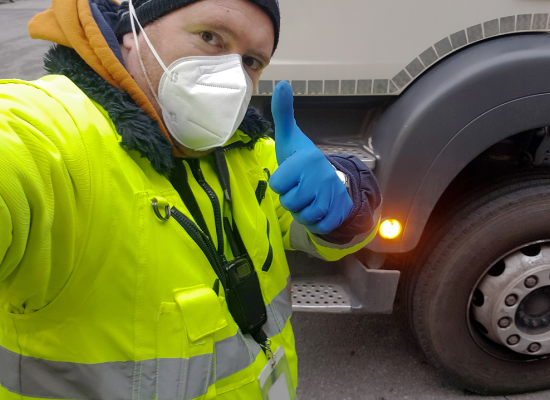
The COVID-19 pandemic has some businesses closed and others working overtime. Your work in the transportation industry is essential in helping the country weather this storm. But, are you pushing your people too hard?
The National Safety Council (NSC) classifies drowsy driving as impaired driving. It is similar to driving under the influence of alcohol – something you would never allow in your fleet.
- Drivers’ reaction times, awareness of hazards and ability to sustain attention all worsen the drowsier the driver is
- Driving after going more than 20 hours without sleep is the equivalent of driving with a blood-alcohol concentration of 0.08% – the U.S. legal limit
- You are three times more likely to be in a car crash if you are fatigued
According to the National Sleep Foundation, about half of U.S. adult drivers admit to consistently getting behind the wheel while feeling drowsy. About 20% admit to falling asleep behind the wheel at some point in the past year – with more than 40% admitting this has happened at least once in their driving careers.
How do you curtail drowsy driving? Here are a few interventions.
Crash avoidance technologies: New and existing safety technologies, such as drowsiness alert and lane departure warnings, can detect common drowsy driving patterns and warn drivers to stay in their lane or take a break
Getting more sleep: According to the American Academy of Sleep Medicine and the Sleep Research Society, adults should get seven or more hours of sleep each night
Employers: Workplaces with strong off-the-job safety and health programs can include key information on getting sufficient sleep and refraining from driving drowsy
Hours of Service Regulations
According to the Federal Motor Carrier Safety Administration, most drivers must follow Hours of Service regulations if they drive a commercial motor vehicle (CMV). In general, a CMV is a vehicle that is used as part of a business and is involved in interstate commerce and fits any of these descriptions:
- Weighs 10,001 pounds or more
- Has a gross vehicle weight rating or gross combination weight rating of 10,001 pounds or more
- Is designed or used to transport 16 or more passengers (including the driver) not for compensation
- Is designed or used to transport 9 or more passengers (including the driver) for compensation
- Is transporting hazardous materials in a quantity requiring placards
A summary of Hours of Service regulations is available here.
Help your drivers learn the signs of fatigue with this poster, available for download.
Download this flyer with tips for staying alert on the road.
ClickToAddCategories
No categories have been created yet.
Community
Company Updates
Driver Recruitment
Investor News
Transportation Safety
Claims
Driver Management
Driving Techniques
Distracted Driving
Seasonal Driving Tips
Sharing the Road
Health & Wellness
Injury Prevention
Regulations
Security & Cargo Theft
Vehicle Inspections
Weather Conditions
Workplace Safety
Workers Compensation
Done